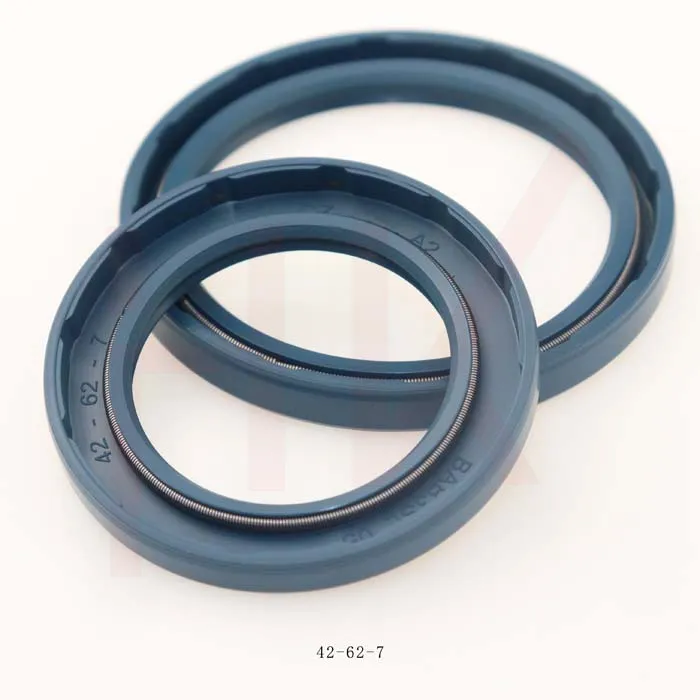ഡിസം . 24, 2024 11:06 Back to list
High-Performance Seals for Extreme Temperature Shaft Applications and Reliability
High Temperature Shaft Seals Essential Components for Machinery Performance
Shaft seals are critical components in various mechanical systems, particularly in applications where rotating shafts operate in challenging environments. Among the key concerns for these seals is their ability to withstand high temperatures, which can significantly impact the efficiency and longevity of machinery. This article explores high-temperature shaft seals, their importance, materials used, factors affecting their performance, and best practices for maintenance.
The Importance of High Temperature Shaft Seals
High temperature shaft seals play a crucial role in preventing the leakage of fluids—be it lubricants, hydraulic fluids, or other essential substances—while simultaneously keeping contaminants such as dust, dirt, and moisture from entering the machinery. In high-temperature applications, failure of these seals can lead to not only fluid loss but also increased wear and tear on mechanical parts, which may result in costly downtimes and repairs.
Industries such as automotive, aerospace, oil and gas, and manufacturing often operate under rigorous temperature conditions, and the performance of shaft seals in these situations is vital. High-temperature shaft seals help maintain operational efficiency, reduce maintenance costs, and prolong the life of rotating equipment.
Materials Used in High Temperature Shaft Seals
Selecting the right material is critical for the performance of high-temperature shaft seals. Common materials used include
1. Fluoroelastomer (FKM) Known for its excellent thermal stability and chemical resistance, FKM can withstand temperatures up to 200°C (392°F) and is ideal for many high-temperature applications.
2. Silicone Rubber Suitable for moderate temperatures, silicone rubber can resist heat up to approximately 230°C (446°F). It remains flexible at low temperatures, making it a versatile option in various environments.
3. Polyurethane This material offers good abrasion resistance and can operate at temperatures up to 90°C (194°F). While not as heat resistant as FKM or silicone, polyurethane seals are effective in many applications.
4. Graphite Used in some high-performance applications, graphite-based seals can withstand extreme temperatures, often exceeding 300°C (572°F). They are particularly useful in environments where traditional elastomers may fail.
Selecting the right material depends on the specific application, including the operating temperature, type of fluid, and exposure to contaminants
.Factors Affecting Performance
high temperature shaft seals

Several factors can influence the performance and lifespan of high-temperature shaft seals
1. Temperature Fluctuations Frequent changes in temperature can cause materials to expand and contract, leading to premature wear. Consistent operating temperatures are ideal.
2. Chemical Exposure Depending on the application, seals may encounter aggressive chemicals that can degrade the material. It’s essential to choose seal materials compatible with the fluid they will be exposed to.
3. Shaft Misalignment Proper alignment is critical for seal performance. Misalignment can lead to uneven wear and eventual failure of the seal.
4. Installation Procedures Incorrect installation can compromise the effectiveness of a shaft seal. Adhering to manufacturer guidelines during installation and ensuring that the seal is properly seated is crucial.
Best Practices for Maintenance
To ensure the longevity and effective performance of high-temperature shaft seals, regular maintenance is essential. Here are some best practices
1. Routine Inspections Regularly check seals for any signs of wear, leakage, or damage. Early detection can prevent more significant problems down the line.
2. Monitor Operating Conditions Keep an eye on temperature and pressure variations during operation. Understanding your machinery’s operating environment helps in taking timely actions to mitigate issues.
3. Use Appropriate Lubricants Ensure that any lubricants used are compatible with the seal material and can withstand the operating temperatures.
4. Training and Awareness Train personnel on the importance of high-temperature shaft seals and proper maintenance procedures to enhance overall equipment reliability.
Conclusion
High-temperature shaft seals are indispensable for maintaining the efficiency and reliability of machines operating in demanding environments. By understanding the materials, factors influencing performance, and maintenance practices, industries can optimize their operations and minimize the risks associated with seal failure. Proper attention to these components ensures not only the smooth operation of equipment but also significant cost savings and enhanced productivity.
-
The Trans-formative Journey of Wheel Hub Oil Seals
NewsJun.06,2025
-
Graphene-Enhanced Oil Seals: Revolutionizing High-Pressure Oil Sealing
NewsJun.06,2025
-
Future of Hydraulic Sealing: Advanced Intelligent TCN Oil Seals
NewsJun.06,2025
-
Don’t Let a Broken TCV Oil Seal Ruin Your Day
NewsJun.06,2025
-
Bio-Inspired Dust Seals for Better Sealing Performance
NewsJun.06,2025
-
Biodegradable and Sustainable Hydraulic Seal Materials
NewsJun.06,2025
-
Top Oil Seal Solutions for Your Industrial Needs
NewsMay.22,2025
Products categories
















